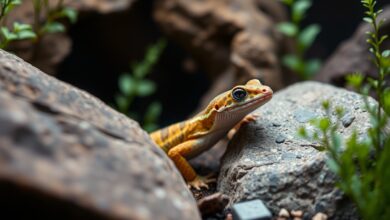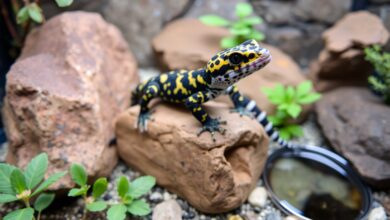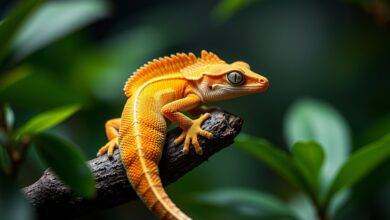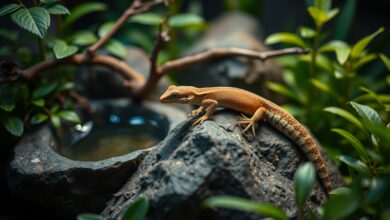Leopard Gecko Morph Chart – 8 Types and Identification Tips
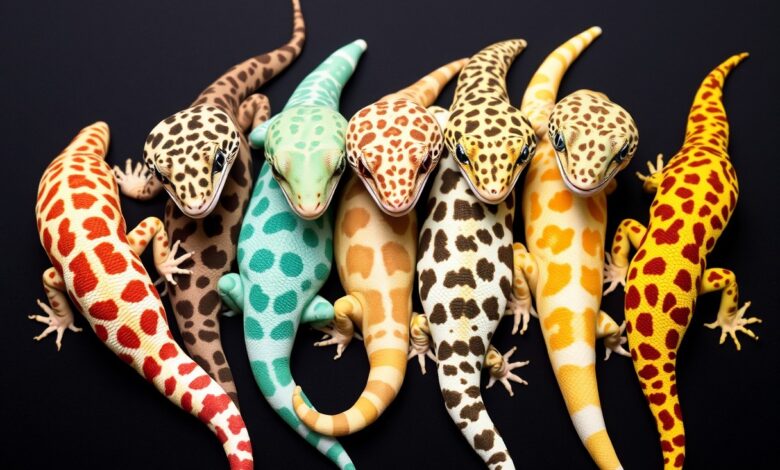
Morphs can greatly influence your Leopard Gecko’s appearance and personality traits, making it crucial for you to understand the various types available. In this blog post, you will discover the eight distinct morphs of Leopard Geckos, each with unique features that can affect your choice as a pet owner. Along with identification tips, you’ll gain insights into the visual characteristics and color variations that define each morph, empowering you to make informed decisions for your reptilian companion.
Key Takeaways:
- Diversity of Morphs: The Leopard Gecko offers a wide variety of morph types, each with unique color patterns and characteristics. Understanding these can enhance your appreciation of these reptiles.
- Identification Techniques: Key identification tips include examining the animal’s color, pattern, and eye coloration, which help distinguish between morphs effectively.
- Genetic Background: Each morph’s traits are influenced by their genetic background, making it important to learn about the genetics behind each type for better breeding practices.
Overview of Leopard Gecko Morphs
A variety of stunning colors and patterns define the enchanting world of leopard gecko morphs. These unique traits result from selective breeding and have gained immense popularity among reptile enthusiasts. Understanding the spectrum of morphs is not only fascinating but also crucial for those looking to care for or breed these captivating reptiles.
What Are Leopard Gecko Morphs?
Above all, leopard gecko morphs refer to the distinct physical variations in color, pattern, and texture among these reptiles. Each morph showcases a unique combination of traits, which can range from vivid yellows and oranges to alluring whites and greys. These differences arise from genetic factors, allowing breeders to create an extensive array of morphs available on the market.
Importance of Morph Identification
On the surface, identifying morphs may seem purely aesthetic; however, it plays a significant role in responsible reptile care. Understanding your gecko’s morph can provide insights into its specific care requirements, such as temperature, humidity, and dietary needs.
What can help you in providing the best care for your leopard gecko is understanding its morph’s specific requirements. Each morph may have unique temperamental traits or vulnerability to certain health issues, making it important for you to tailor your care approach. Additionally, identifying morphs is vital in preventing unethical breeding practices and ensuring the health and well-being of your pet. By being informed, you contribute to responsible ownership and uphold the integrity of the leopard gecko community.
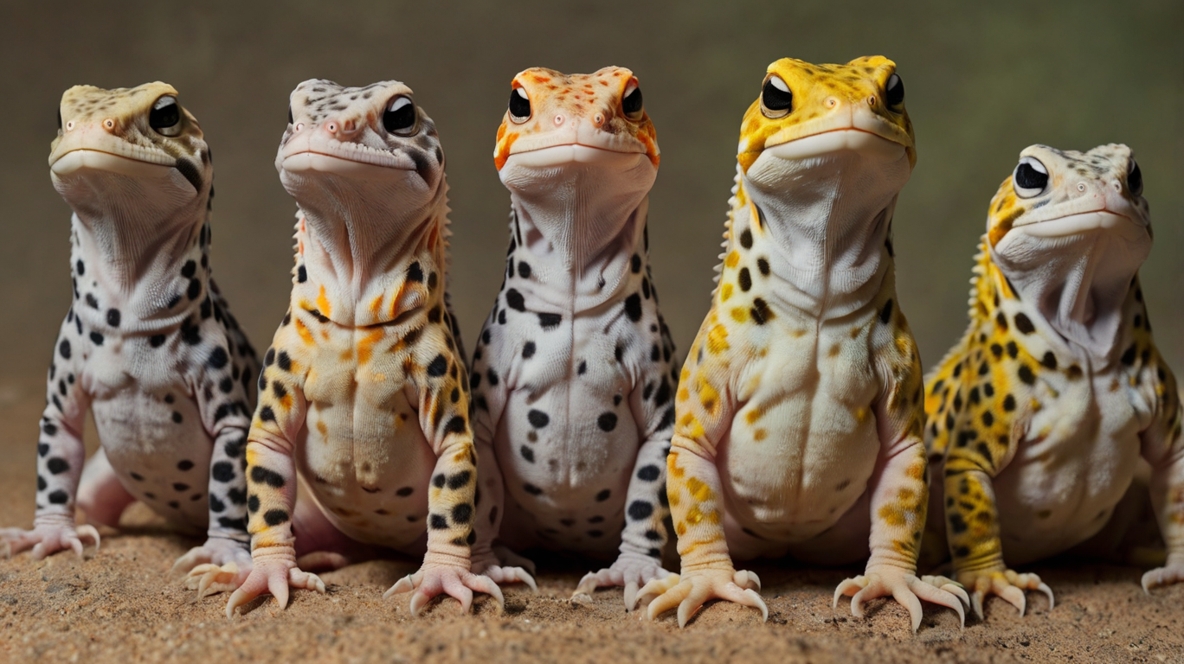
The 8 Types of Leopard Gecko Morphs
It’s important to know that there are various types of leopard gecko morphs, each with distinct characteristics. Understanding these morphs not only aids in identification but also enhances your knowledge about their absolute beauty. Below is a chart illustrating the primary morphs:
| Morph Type | Description |
|---|---|
| Normal | Standard pattern with yellow and black spots |
| Hypo Melanistic | Fewer dark pigments, resulting in a lighter appearance |
| Tangerine | Increased orange coloration |
| Albino | Lacks pigment; usually has reddish eyes |
| Super Snow | All white with dark patterns |
Normal Leopard Gecko
Against the exotic morphs, the normal leopard gecko showcases the original wild type with its striking yellow color and distinct black spots. This morph serves as a foundation for many others and is easily recognizable by its traditional patterns.
Hypo Melanistic
An identifiable trait of the hypo melanistic morph is its lighter pigmentation, leading to a more subtle appearance when compared to the normal variant. You will notice reduced black spots, enhancing the overall vibrancy of its colors.
The hypo melanistic morph stands out due to its genetic reduction in dark pigments. This results in a lighter body color, often presenting in shades of yellow or orange, with minimal black spots, which makes it especially appealing to many reptile enthusiasts.
Tangerine
Melanistic leopard geckos of the tangerine morph feature a vivid orange hue, often outshining other colors. These geckos can vary in intensity, reflecting different genetic backgrounds.
Morphs of tangerines are known for their stunning bright shades that can be further enhanced by selective breeding, resulting in various tangerine shades. You might find that some variations have a unique pattern that adds to their visual appeal, making them highly sought after in the gecko community.
Albino
Around the world of leopard geckos, the albino morph is fascinating due to its lack of pigment and striking appearance. Featuring red or pinkish eyes, this morph is visually captivating.
The albino variant plays an important role in reptile breeding as its unique characteristics can be combined with other morphs to produce incredible visual results. Due to its lack of pigment, proper UV lighting is vital to maintain its health and vitality.
Super Snow
To identify the super snow morph, you’ll note its striking contrast of deep black markings on a pure white background, rendering it a stunning sight. This morph can sometimes exhibit unique patterns that can baffle enthusiasts.
In addition, the super snow morph has become popular because of its extraordinary graphics and captivating appearance, representing a genetic combination of the snow morph and other traits. Proper care is important, as their striking patterns require adequate lighting and a well-maintained habitat.
Enigma
Among the most interesting morphs, the enigma features unique patterns and colors, often seen as a puzzle among enthusiasts. This morph showcases a combination of the hypnotic traits that can vary widely.
Also, the enigma morph is notable for its genetic complexity, contributing to a variety of colorations. While the mix can result in striking appearances, it’s crucial to understand that this morph should be bred responsibly, as breeding issues can arise due to its genetic traits.
Bell Albino
Above many other morphs, the bell albino impresses with its striking look, characterized by bright yellow skin accompanied by bold patterns and captivating red eyes. You might consider this morph for its distinctive visual appeal.
It’s important to note that the bell albino morph results from a specific genetic mutation, leading to its unique coloration and lack of melanin. This morph requires attentive breeding practices to avoid health issues related to its genetic lineage.
Radars
For those seeking out unique appearances, radars combine features of the bell albino and murphy patternless morphs, resulting in stunning patterns and coloration. You will find their eye-catching looks much admired in the reptile community.
Leopard radars showcase a beautiful blend of features, combining brightness with less pigmentation, creating distinct variations in pattern. They often exhibit vibrant and contrasting colors, making them a favorite for collectors and enthusiasts alike.
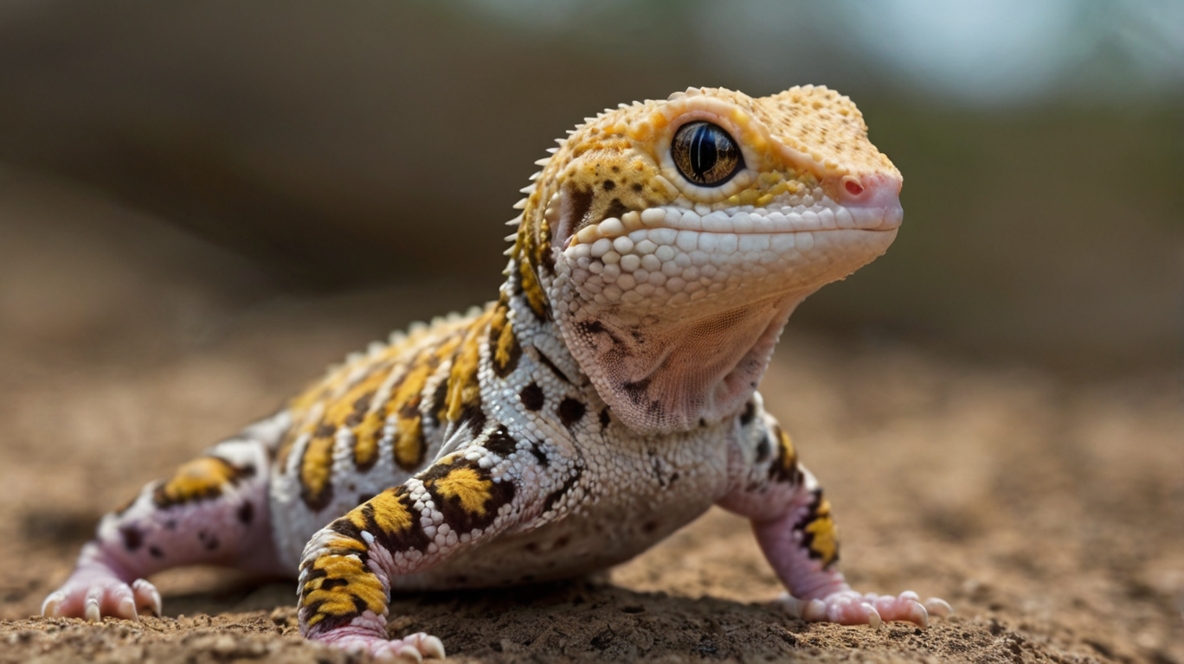
Identifying Morph Variations
Now that you are familiar with leopard gecko morphs, identifying their variations is necessary for enthusiasts and potential owners. You can refer to the Morph Guide for leopard geckos | Wiki | Reptiles Amino for comprehensive insights into each morph’s unique traits. This knowledge will enhance your appreciation and understanding of these captivating reptiles.
Physical Characteristics
An effective way to identify leopard gecko morphs is by examining their physical characteristics, such as color patterns, skin texture, and body size. Variations like Albino, Tremper, and Bold Stripe possess distinct features, making them easily recognizable and differing in appearance from one another.
Behavioral Traits
Beside their physical features, leopard geckos exhibit various behavioral traits that can help identify their morphs. Some morphs may show increased activity levels or distinct temperaments, making them engaging pets.
For instance, while some morphs are known to be more docile and easy to handle, others may display a more aggressive or skittish nature. Understanding these behavioral differences can help you select a morph that suits your lifestyle and preferences, ensuring a more enjoyable experience with your new pet.
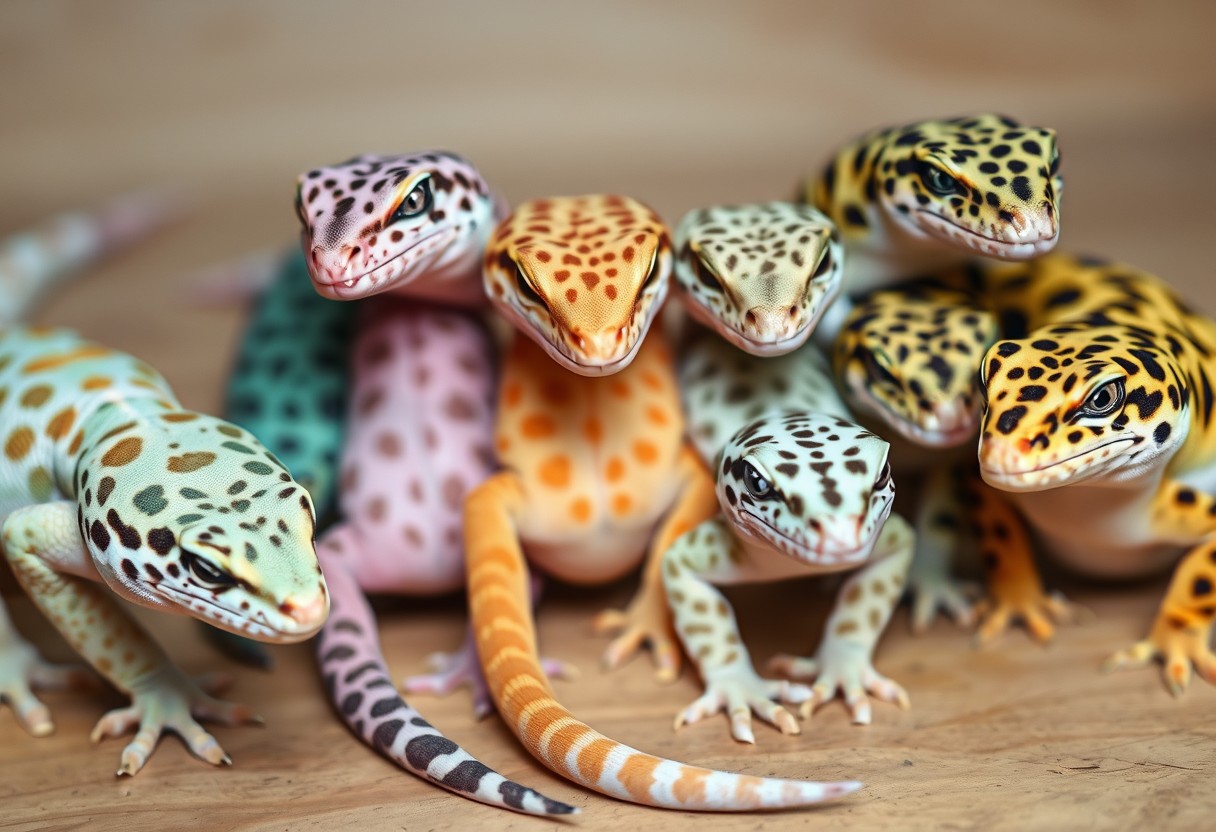
Caring for Different Morphs
After selecting the perfect leopard gecko morph for your home, it’s important to understand that different morphs may have unique care requirements. While the fundamental needs remain similar, nuances in habitat, diet, and temperature can affect their overall health and well-being. By tailoring your care approach based on the specific morph you have, you can ensure a happy and thriving pet.
Habitat Considerations
Around each morph, it’s important to provide an environment that mimics their natural habitat. This includes adequate hiding spots, appropriate substrates, and varied temperatures for basking. Ensure the enclosure is spacious enough to accommodate your gecko’s active nature, as some morphs may require more climbing and burrowing space than others.
Dietary Needs
Across different leopard gecko morphs, the dietary requirements are primarily insect-based. You will need to offer a varied diet consisting of crickets, mealworms, and roaches, which can provide the important nutrients your gecko needs. Supplementing their food with calcium and vitamins will also help prevent deficiencies.
Understanding the dietary needs of your leopard gecko morph is vital for its health. It is important to feed your pet a balanced diet consisting of various insects, as different morphs might have different preferences for size or type. Always provide fresh and clean water, and be cautious with portion sizes to prevent obesity. Pay attention to your gecko’s behavior and adjust their diet accordingly, as healthy feeding habits can lead to a more active and vibrant gecko. Additionally, incorporating calcium and vitamin supplements can help avoid serious health issues. Always strive for a balanced diet tailored to your unique pet!

Breeding Leopard Gecko Morphs
Despite the complexity involved in breeding Leopard Gecko morphs, enthusiasts find it rewarding. Thoroughly understanding different morphs can improve your breeding success. For a comprehensive guide, you can refer to the Leopard Gecko Morphs Reference Sheet, which outlines the various traits and combinations.
Breeding Considerations
For successful Leopard Gecko breeding, you must assess the health and genetic traits of your breeding pairs. Prioritize their well-being by ensuring they are of suitable age, size, and free from disease to produce healthy offspring.
Genetic Influences
With Leopard Geckos, understanding genetic influences is vital for achieving desired morphs. Each morph is the result of specific genetic traits inherited from the parents.
And, by selectively breeding geckos with desirable traits, you can enhance specific characteristics in the offspring. Be aware of potential challenges like genetic anomalies that can arise, impacting your breeding efforts negatively. Utilizing genetic diversity in your breeding pairs is vital to avoid health issues. Always research and track lineage to promote healthy morphs and reduce the risk of inherited defects.
Common Myths About Leopard Geckos
Keep in mind that there are numerous myths surrounding leopard geckos that can mislead novice owners. It’s important to separate fact from fiction to ensure the well-being of your pet. For more insights, check out 27 Most Popular Leopard Gecko Morphs (With Pictures 🦎).
Debunking Popular Misconceptions
Around the reptile community, you’ll encounter various misconceptions about leopard geckos, such as their supposed aggressiveness or dietary needs. Understanding these myths can enhance your experience as a responsible owner and provide your gecko with a healthy environment.
Fact vs. Fiction
Beside the myths, it’s important to distinguish between fact and fiction. Many people believe leopard geckos are high-maintenance pets, but in reality, they are quite low-maintenance once you establish proper care routines. Their adaptability makes them perfect for both beginners and experienced owners alike. Understanding their true behavior and environmental needs is vital for a successful ownership experience.
About their behavior, leopard geckos are generally docile and friendly, contrary to the belief that they are aggressive. While they do require specific habitat conditions to thrive, they are not prone to health issues if cared for properly. You should avoid handling them roughly and instead offer gentle interactions, as this will foster trust between you and your pet. Ultimately, understanding these distinctions contributes to your success as a responsible owner.
Final Words
On the whole, mastering the Leopard Gecko Morph Chart with its eight distinct types can greatly enhance your ability to identify and select the perfect gecko for your needs. By understanding the unique characteristics of each morph and applying the identification tips provided, you can make more informed decisions when choosing your next pet or expanding your collection. Your knowledge of these stunning reptiles not only enriches your experience but also fosters a deeper appreciation for their diversity and beauty.
Q: What are the main types of Leopard Gecko morphs?
A: Leopard Geckos come in a variety of morphs, with eight main types being the most recognized. These include Classic, Albino, Hypomelanistic, Tangerine, Mack Snow, Blizzard, Super Giant, and Enigma. Each morph exhibits distinct colorations, patterns, and traits. The Classic morph features the typical yellow and black pattern, while the Albino morph has reduced pigmentation, resulting in a lighter appearance. Understanding these characteristics helps in identifying and selecting the right morph for pet owners or breeders.
Q: How can one identify different Leopard Gecko morphs?
A: Identifying Leopard Gecko morphs requires paying attention to specific coloration, patterns, and physical features. For instance, Classic morphs exhibit vibrant yellow and black blotching, while the Albino morphs lack the black color entirely and often show hues of pink or white. Morphs like the Mack Snow are characterized by a lighter, almost white body with dark patterns, while the Tangerine morph is recognized for its saturated orange color. Analyzing these traits along with observing the gecko’s size and growth can significantly assist in accurate identification.
Q: Are certain Leopard Gecko morphs more common than others?
A: Yes, certain Leopard Gecko morphs tend to be more prevalent in the pet trade than others. The Classic morph is the most common and widely recognized due to its natural appearance, while the Albino and Tangerine morphs also enjoy considerable popularity. Morphs like the Enigma and Super Giant may be less commonly found, often due to the specificity in breeding and less frequent reproduction. Market demand and breeder preferences contribute to the variability in availability among the different morphs.


